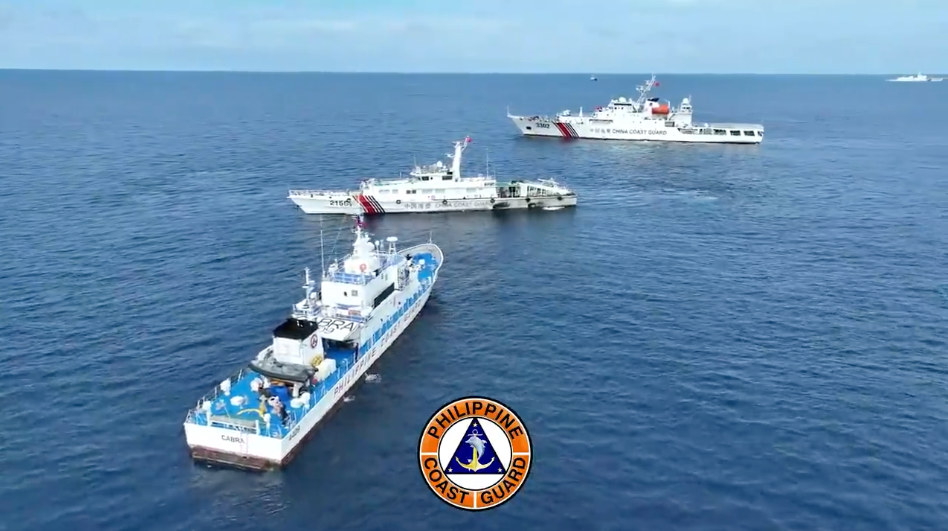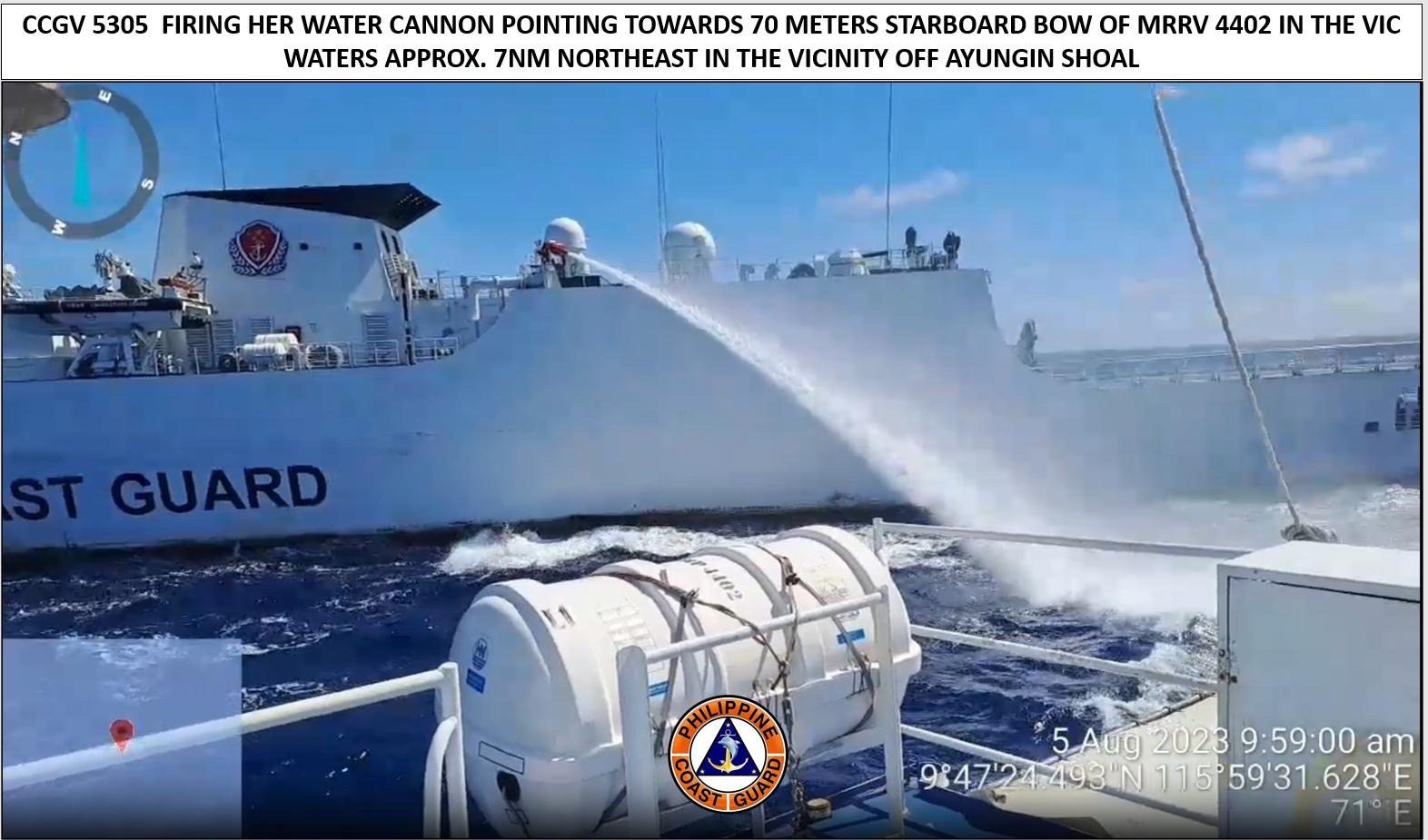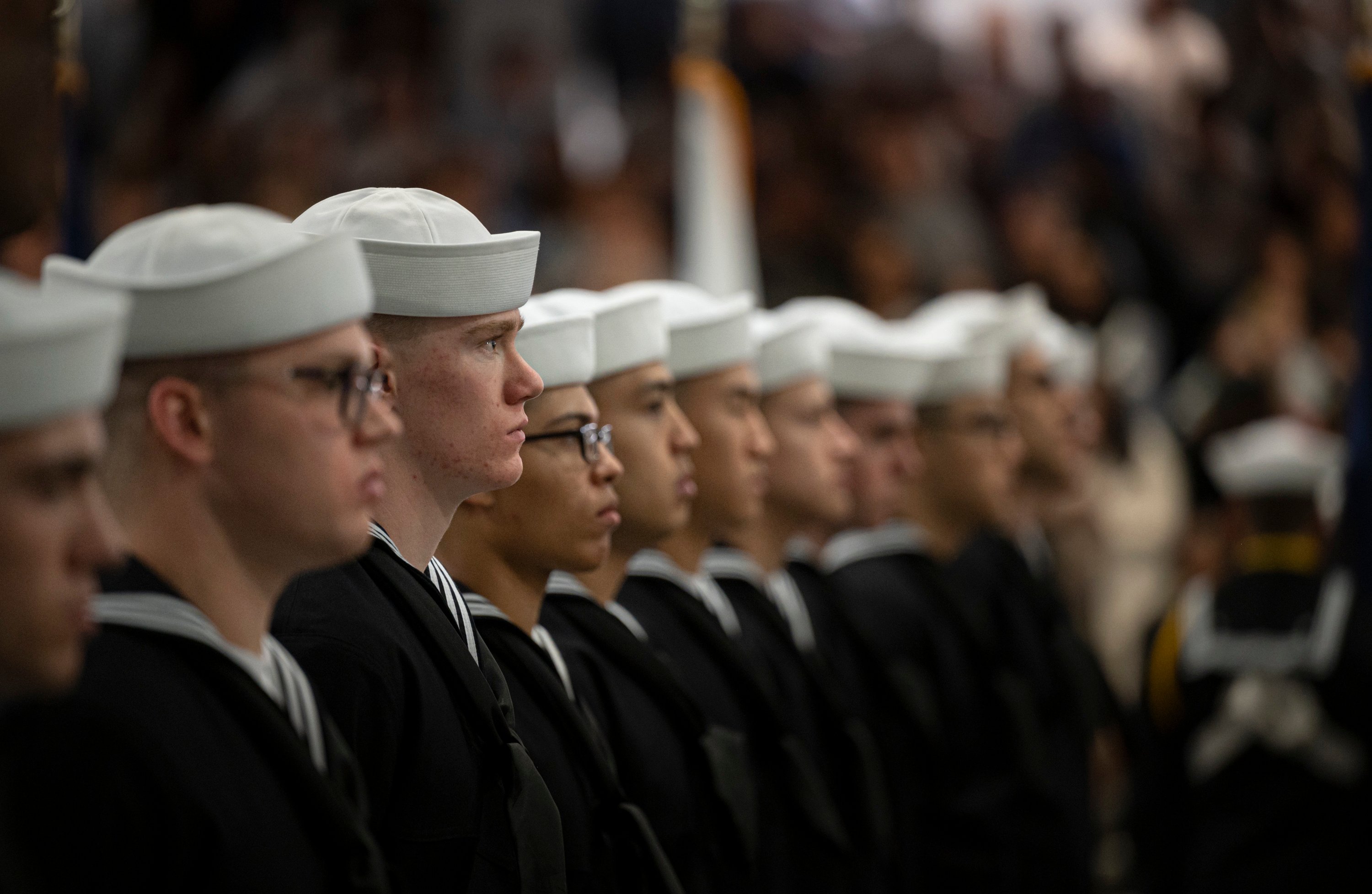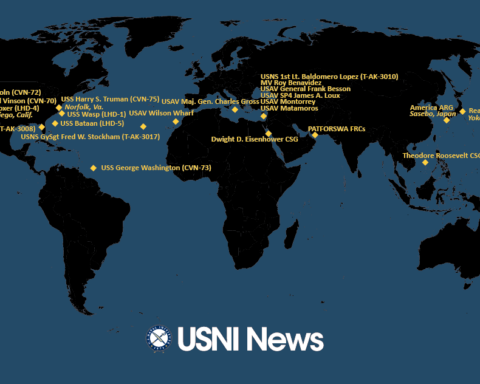
With a U.S. Navy reconnaissance plane circling overhead, two resupply ships escorted by two Philippine Coast Guard vessels maneuvered their way through a Chinese naval blockade in a five-hour confrontation to bring food, other supplies and a fresh crew to its forces guarding a contested shoal, according to press reports.
Manilla invited Associated Press reporters and other journalists aboard the Philippine Coast Guard vessels to report on China’s aggressive actions in the South China Sea, like sailing within 50 yards of a Filipino ship to drive it away.
In Tuesday’s confrontation, four Chinese Coast Guard vessels and four of its naval militia worked together to separate the Philippine Coast Guard cutters from the resupply vessels heading to the grounded ship serving as the outpost.
The reporters also posted an image of a surveillance drone recording the incident, which ended peacefully.
China has previously used water cannons and military lasers to drive off other ships in waters in and around Thomas Shoals, which it claims as it does over most of the South China Sea. Although well within Manila’s Exclusive Economic Zone, the waters are also claimed by other Southeast Asian nations.
The waters around Second Thomas Shoals have increasingly become a flashpoint in Washington and Beijing’s relations. The United States lays no claim to the South China Sea but has declared that freedom of navigation and flight, as well as peacefully resolving disputes, are in its national interest.
Philippine officials told the AP “they’ve received intelligence information and surveillance images taken in the disputed waters from their American and other foreign counterparts in the past as part of security cooperation.”
When asked by reporters about the deployment of the Navy plane, U.S. Embassy spokesperson Kanishka Gangopadhyay in Manila said he could not provide specifics.
“What I can say is that all of our military activities in the Philippines are conducted in full coordination with our Philippine allies,” he said.
A new report from the Center for Strategic and Budgetary Assessments contends that three Philippine-based but contractor-owned and operated unmanned aerial systems would significantly improve maritime domain awareness efforts in the South China Sea in peace and in war.
Thomas Mahnken, CSBA’s chief executive officer and one of the co-authors, said in a roll-out of the report this month the UAS would give the Indo-Pacific Maritime Domain Awareness program “24/7 capability to deter malign actors.” Co-author Travis Sharp added the surveillance data from long-endurance unmanned systems would be integrated with the Quad’s program that “emphasizes commercial space-based collection” and information sharing of unclassified data with participating nations.
The program, so far, has concentrated on illegal fishing, dark shipping – when vessels turn off location systems, maritime conservation and humanitarian crises, not broader security issues that often involve China.
Although improving in resolution, commercial satellites “are less well suited for targeted” intelligence, surveillance and reconnaissance needed to zero in on a single vessel that engaged in criminal activities, like smuggling, Sharp said. “The UAS could provide what’s happening on the vessel” to a nation’s coast guard’s crews that may have to board.
“UAS equipped with multiple sensors, such as a camera and signals intelligence (SIGINT) pod, can find, fix, and track targets independently by correlating observations across different collection methods in near real-time, something commercial satellites do not do. Integrating UAS into IPMDA would prove beneficial even if the initiative never adopts military objectives,” according to the CSBA report.
The UAS could also provide real-time detection of “gray zone” activities by Chinese naval militia and coast guard in territories Beijing claims but remain disputed. Sharp said that intelligence could then trigger a nation to use classified systems to cue its response.
“Detection is often overlooked in deterrence,” Whitney McNamara, associate vice president of Beacon Global Strategies, said in the panel discussion on the report. “China maintains a high-level of deniability” in those “gray zone” actions like its naval militia ramming civilian fishing vessels. Those kinds of incidents are “making it difficult for the U.S. to intervene.” When they do occur, Beijing often tries to “make it appear the United States is the aggressor” when Washington speaks out.
“Detection must be accompanied by a credible military threat to harm,” Sharp added. He said Russia never took seriously the possibility that the United States would respond militarily to an invasion of Ukraine despite providing Kyiv with real-time intelligence so it attacked.
For smaller nations, this UAS and satellite integration would overcome China’s size and resources in these activities out of public view. For them “it’s best to ‘out-sense’ them,” said Sameer Lalwani, director of the Stimson Center’s South Asia program. He added there are questions of just how far information-sharing can go without running up against U.S. policy and export control laws even though the systems are not owned by the federal government.
The United States, Japan, Australia and India, operating as “the Quad,” an informal economic and security arrangement, announced the maritime domain awareness program in May 2022.
For the report, the authors considered basing the unmanned aerial systems in the Philippines and/or Guam, varied the number that would be needed to cover the wider Indo-Pacific or concentrated on a single area, such as the South China Sea. Also factored in the study was the cost of annual operations and whether the UAS should have 40- or 80-hour flight endurance time.
The CSBA authors chose the South China Sea for closer study; the Philippines for basing, which would have to agree to host, because it was closer, and three commercially owned and operated UAS with 40 hours of endurance would be used.

The UAS cost was put at $50 million annually to be divided by the Quad. The endurance limit avoids possible export control restrictions.
Sharp added the use of unmanned aerial systems “grant countries the opportunity to grow capabilities” on their own in maritime awareness.
As to whether American companies would want to participate, McNamara said many tech firms do. “We want to work with companies that understand the risk” of Chinese reprisal. If they agreed to the basing, the same threat of reprisal would be there for a nation like the Philippines that hosts the UAS or Vietnam and Singapore.
Other questions include: are the UAS to be considered a U.S. entity if they are shot down, who owns the UAS’ time for a sortie if another nation also needs immediate assistance for suspicious activity, would positioning contractor-owned and -operated UAS in the Indian Ocean more firmly anchor New Delhi in the expanded mission?
The Quad’s maritime domain awareness effort “faces no tougher test than the [South China Sea], a conflict-rife area beset with territorial and resource disputes and other forms of maritime insecurity. If [the awareness program] performs poorly at monitoring these problems, trying though they may be, then its reputation will suffer and its political support could evaporate. Such a failure would amplify growing concerns about the Quad’s ability to deliver public goods to Southeast Asian countries facing intense pressure from China,” the report reads.





